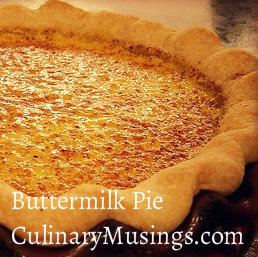The Rich History of a Modern Holiday Treat - Fruitcake
Can you imagine a world without fruitcake? One where it's actually illegal for Great-aunt Gladys to drag out the family fruitcake recipe and bestow her traditional, indigestible gift on all the nieces and nephews?
It could happen. It has before.
As much as we laugh at fruitcakes now, they were once considered delicacies so rich, so tempting, that eating them was akin to a near occasion of sin. Step back in time and learn what all the fuss was about.
A European Tradition
Fruitcakes date at least as far back as the Roman Empire. Historical documents mention recipes that include raisins, barley, spices, preserved fruits, and pomegranates. They were heavy cakes that traveled well and packed a lot of energy into a small package – the perfect treat for soldiers on the march. Crusaders also ate fruitcake on the march across the continent to the Middle East and brought new fruits and spices back home with them.
Fruitcake recipes changed over the years as trade increased and made different ingredients readily available. The average Middle Ages cake was a light bread with fruit sprinkled throughout, but the recipes steadily became more elaborate. By the 1700's, the British celebrated every nut harvest with a fruitcake. They baked the cake with the current year's harvest and saved it to eat the next year, hoping to ensure a successful harvest.
Eventually, the fruitcake evolved into a rich dessert reserved for special occasions like weddings and major holidays. By the 1800's, laws actually restricted fruitcake to these particular celebrations because fruitcakes were considered to be too "sinfully" rich for everyday consumption.
Fruitcake and the New World
If you ask the average resident of the United States to describe a fruitcake, you'll probably hear some version of this: a dark, sticky loaf loaded with a variety of garishly-colored candied fruit. You know; something that looks like a cook burned a loaf of bread after dropping a bag of gummy candies in the dough.
We have only ourselves to blame. Traditional fruitcakes were tasty, relatively healthy cakes made with nuts and dried fruits. But excess sugar production in North American colonies made candied fruit so cheap and plentiful that it became a standard ingredient in fruitcakes. The more pedestrian version flavored with dried dates, raisins, and chopped nuts was replaced by cakes laden with sticky candied cherries, plums, and citrus.
Give the original version a try, and savor the "sinful" mixture of raisins, dates, pecans, honey, and rum. You'll never look at candied fruit again.
Yo Ho Ho and a Slice of Fruitcake
A good fruitcake requires advance planning. It's probably the only baked good that tastes better after sitting for several months – or even a year. How does the "maturing" process enhance the flavor? Well, it's soaking up rum, for one thing. Not only does the rum (or liqueur) add flavor, it retards mold as well. Yum!
No, really. A traditional fruitcake is absolutely delicious. Try this recipe for yourself. It's a variation of another great traditional recipe called "Christmas Fruitcake" that can be found at AllRecipes.com. As the author notes: "It's a shame that fruitcake as a species gets such a bad rap. With its two key ingredients - rum and butter - it ought to be a hit."
Three Month Fruitcake
This recipe is substitution-friendly. You can mix and match the dried fruit based on your favorites, although bananas don't work well. The nuts are optional; if you leave them out, add extra dried fruit. Also, some family members use brandy instead of rum. It's cook's choice!
Ingredients
- 1 cup dried fruit - figs, raisins, dates, cherries, and cranberries work well.
- 1/2 cup chopped pecans (walnuts also work)
- 1/3 cup rum (dark rum adds more flavor)
- 1/2 cup butter
- 1/4 cup dark brown sugar, packed
- 1 large egg
- 1/2 cup cake flour
- 1/8 teaspoon baking soda
- 1/4 teaspoon salt
- 1 teaspoon baking spice
- 1/4 cup raw honey (orange blossom adds a great flavor)
- 2 tablespoons milk
- 1/4 cup dark rum
Preparation
1. Soak the dried fruit and nuts in 1/3 cup rum for 24 hours in tightly covered container.
2. Preheat oven to 325 degrees. Spray a small (6 inch) cake pan with cooking spray and line with parchment paper.
3. In small bowl, sift flour, baking soda, salt, and baking spice. Set aside.
4. Cream butter and brown sugar until fluffy. Beat in the egg.
5. Slowly, by hand, stir in flour mixture, alternating with milk and honey. Don't use the mixer.
6. Add rum-soaked fruit and nuts (and rum if there's any left!)
7. Pour batter into cake pan and bake 40 minutes.
8. After cake cools, pour 2-3 tablespoons rum over the top and let it soak in.
9. Cut a piece of parchment paper that's large enough to wrap around the cake completely. Place the parchment in an airtight tin. Place cake in tin and sprinkle with the remaining rum. Wrap parchment tightly around the cake and cover the tin.
You can eat the cake after a week or so, but it tastes better if it sits for several months. Check the cake every six weeks or so. If it seems to be drying out, add a few teaspoons of rum.
With all the rum, this fruitcake recipe isn't exactly the most family-friendly recipe available, but it is delicious.
If fruitcake won't do the trick, check out our kitchen gadgets as holiday gifts article for some gift giving ideas.
If you like fruit recipes, you might also like to try our healthy banana nut bread recipe or our apple walnut bread. Both are incredible.




